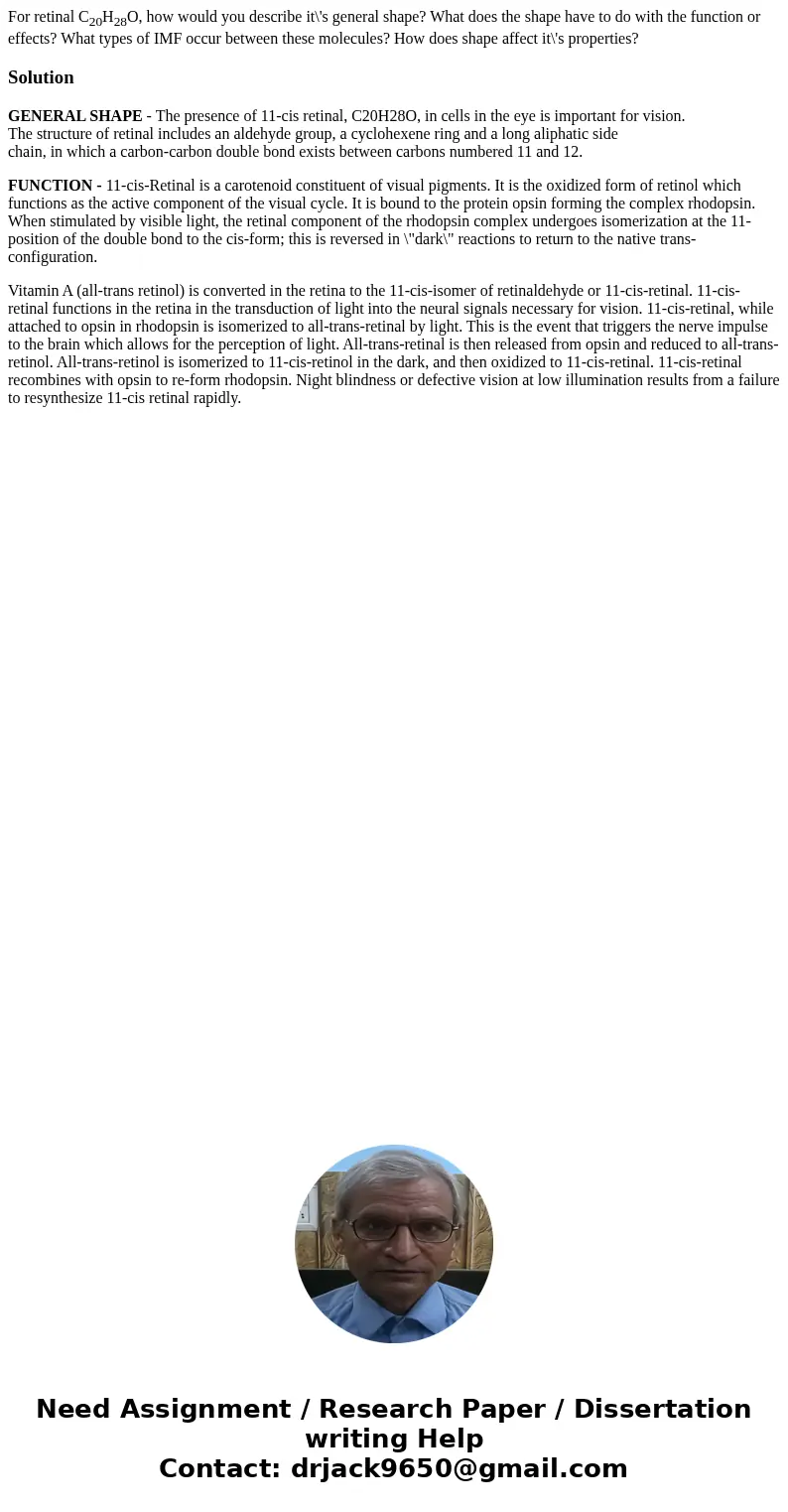For retinal C20H28O how would you describe its general shape
For retinal C20H28O, how would you describe it\'s general shape? What does the shape have to do with the function or effects? What types of IMF occur between these molecules? How does shape affect it\'s properties?
Solution
GENERAL SHAPE - The presence of 11-cis retinal, C20H28O, in cells in the eye is important for vision.
The structure of retinal includes an aldehyde group, a cyclohexene ring and a long aliphatic side
chain, in which a carbon-carbon double bond exists between carbons numbered 11 and 12.
FUNCTION - 11-cis-Retinal is a carotenoid constituent of visual pigments. It is the oxidized form of retinol which functions as the active component of the visual cycle. It is bound to the protein opsin forming the complex rhodopsin. When stimulated by visible light, the retinal component of the rhodopsin complex undergoes isomerization at the 11-position of the double bond to the cis-form; this is reversed in \"dark\" reactions to return to the native trans-configuration.
Vitamin A (all-trans retinol) is converted in the retina to the 11-cis-isomer of retinaldehyde or 11-cis-retinal. 11-cis-retinal functions in the retina in the transduction of light into the neural signals necessary for vision. 11-cis-retinal, while attached to opsin in rhodopsin is isomerized to all-trans-retinal by light. This is the event that triggers the nerve impulse to the brain which allows for the perception of light. All-trans-retinal is then released from opsin and reduced to all-trans-retinol. All-trans-retinol is isomerized to 11-cis-retinol in the dark, and then oxidized to 11-cis-retinal. 11-cis-retinal recombines with opsin to re-form rhodopsin. Night blindness or defective vision at low illumination results from a failure to resynthesize 11-cis retinal rapidly.

 Homework Sourse
Homework Sourse